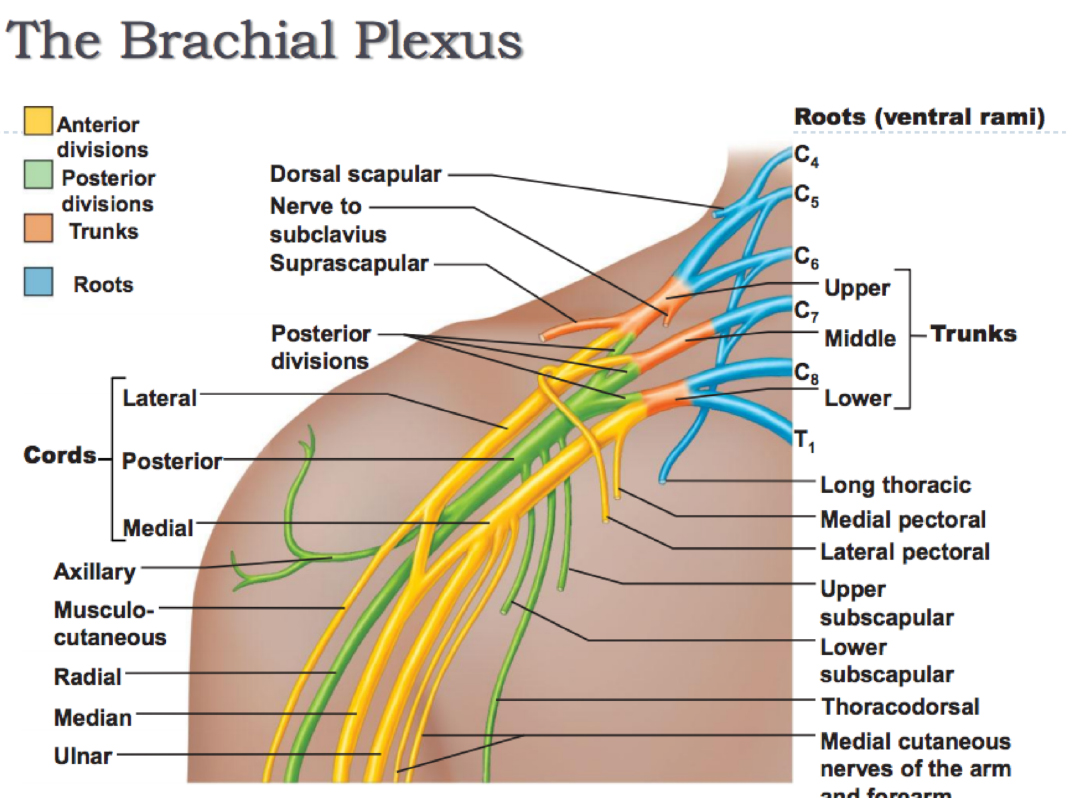Learn More About This Often Misunderstood Tactic!
Over the past several months, as we continuously work to refine our skills in all levels of Krav Maga, I’ve heard several Krav Maga Houston instructors talk about the “Brachial Nerve”.
The Brachial Plexus is the network of nerves that sends signals from your spine to your shoulder, arm, and hand. A brachial plexus injury occurs when these nerves are stretched, compressed, or in the most serious cases, ripped apart or torn away from the spinal cord. The Brachial Plexus is composed of 5 roots, 3 trunks, 6 divisions, 3 cords, and terminal branches that innervates the aforementioned – which in turn provides us with 6 divisions of highly sensitive nerves that can be dramatically affected by the effective use of a brachial stun.

A version of the Army Field Manual on combatives (FM 21-150) describes a brachial stun this way:
A sharp blow to the side of the neck causes unconsciousness by shock to the carotid artery, jugular vein, and Vagus nerve. For maximum result, the blow should be focused below and slightly in front of the ear. A less powerful blow causes involuntary muscle spasms and intense pain. The side of the neck is one of the best targets to use to drop an opponent immediately or to disable him temporarily to finish him later.
Generally, in Krav Maga we use the Brachial Plexus as a target of opportunity, often as we move into a position of control. In Krav Maga classes, we are generally are very careful with our partners, but it is important to note, that a brachial stun delivered with intent can transform an unsustainable structure (our position of control) into a more sustainable one (or, in some cases incapacitate the attacker).
Injuries to the Brachial Plexus have been known to cause weakness, numbness, loss of sensation, loss of movement (paralysis), and pain.
Understanding this potent attack and its best use in the context of Krav Maga is a must for those who take their training seriously.
References
- Leffert, Robert. The Anatomy of the Brachial Plexus. Brachial Plexus Injuries. New York, NY: Churchill Livingstone; 1985.
- Abdullah S, Bowden RE. The blood supply of the brachial plexus. Proc R Soc Med. 1960 Mar. 53:203-5.





John Douvillier
What causes unconsciousness by shock to the carotid artery, jugular vein, and Vagus nerve?
Medically, what is the exact mechanism that causes unconsciousness? Is the Greater Auricular Nerve involved here at all? It would seem to be.